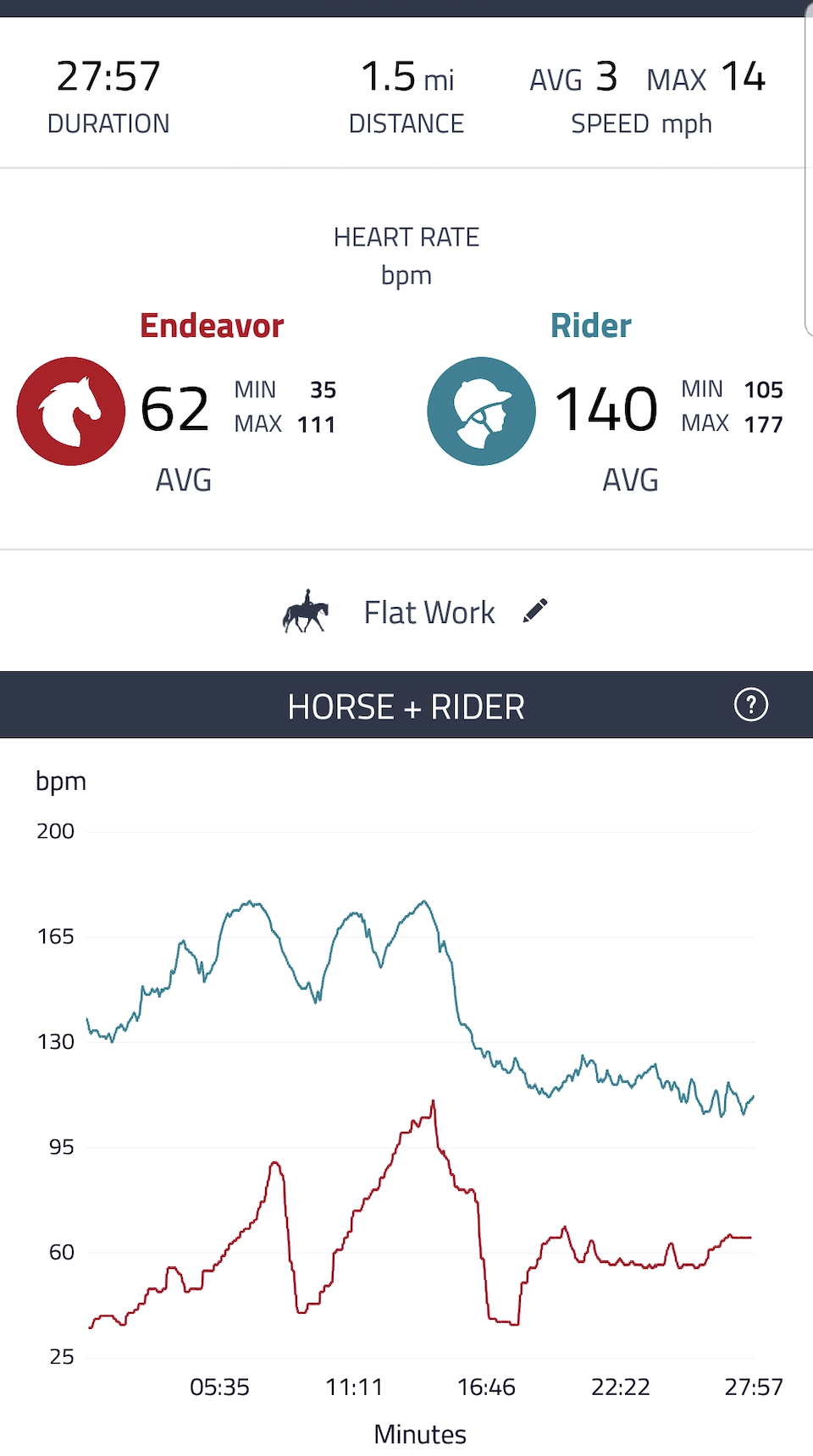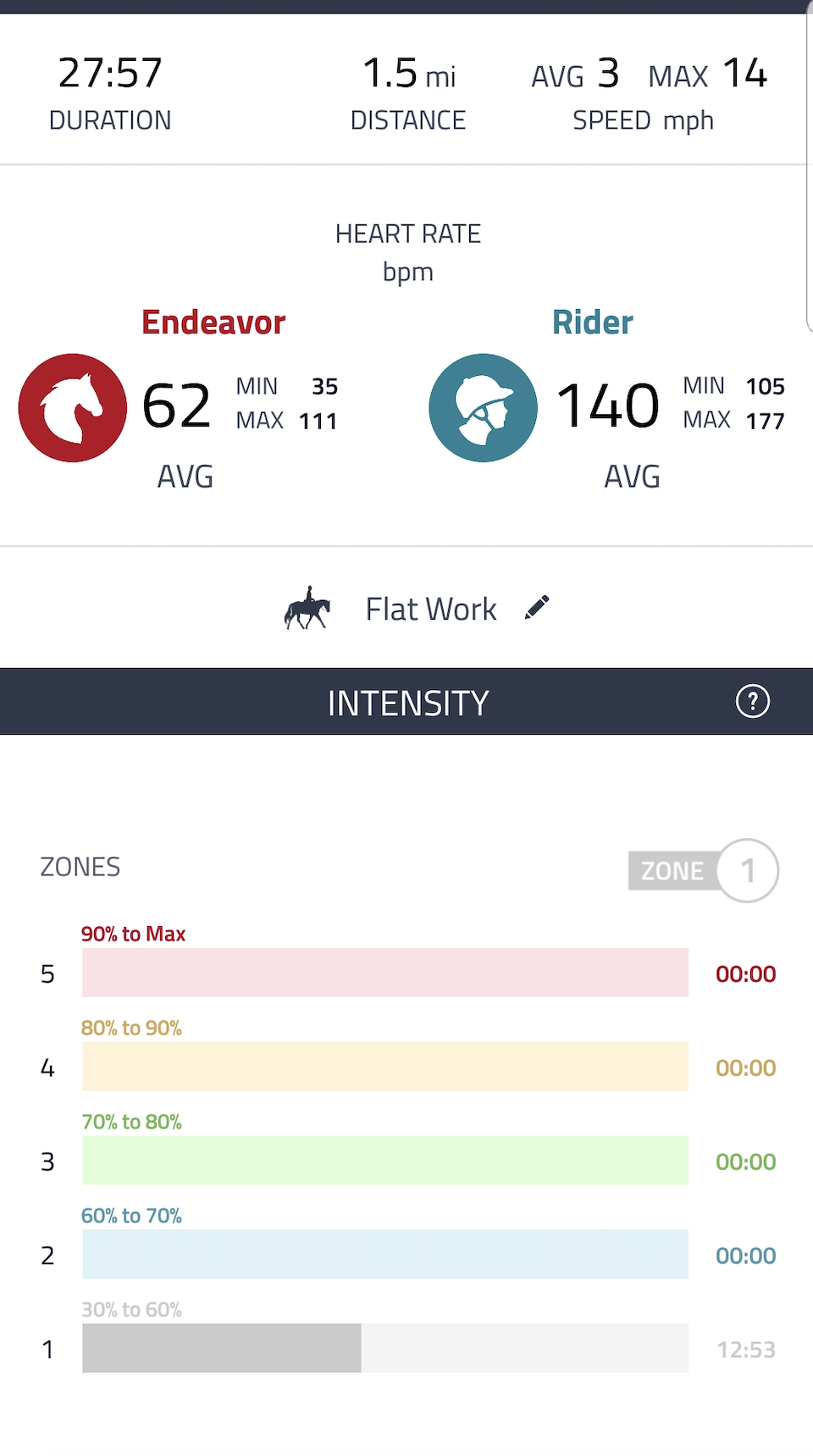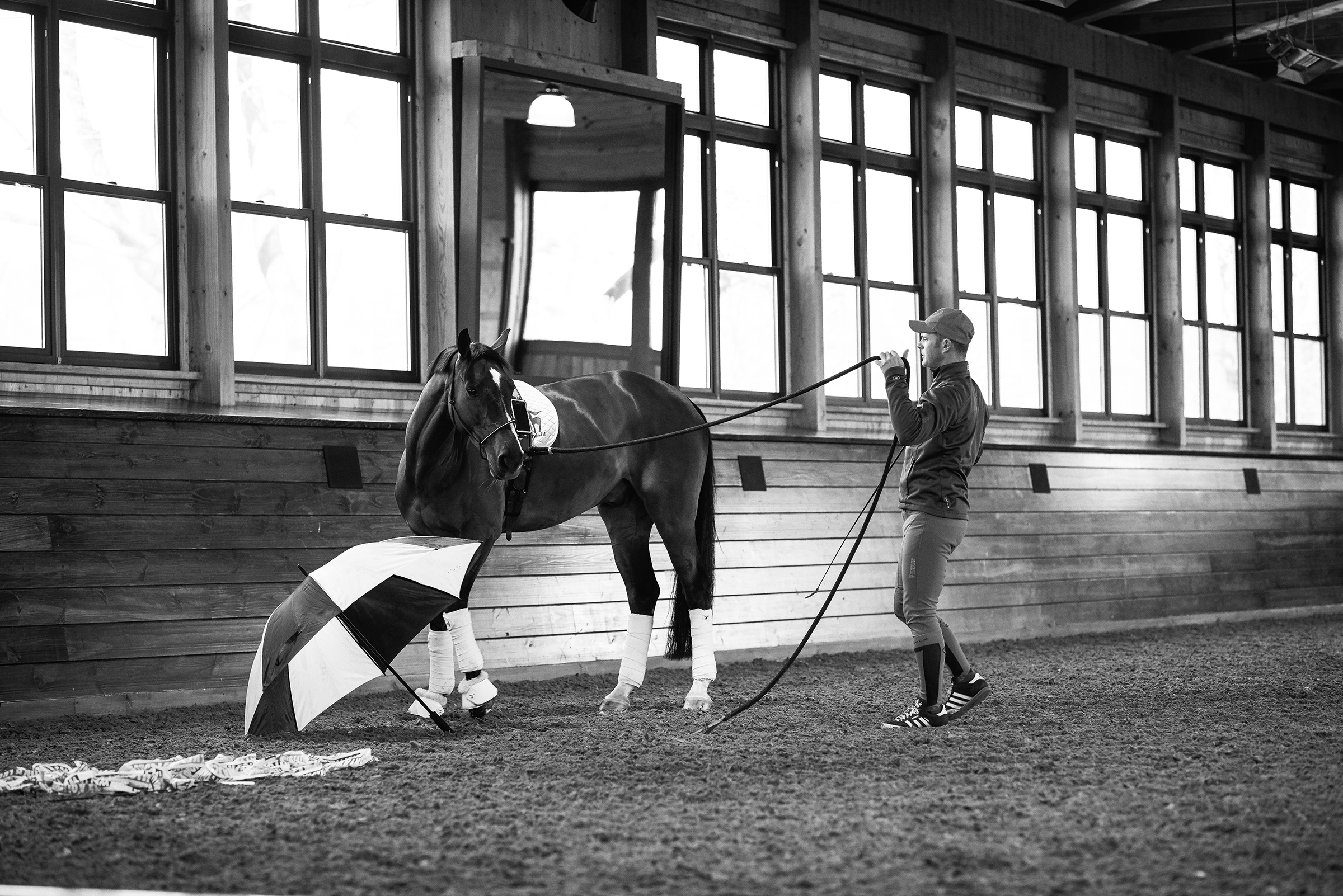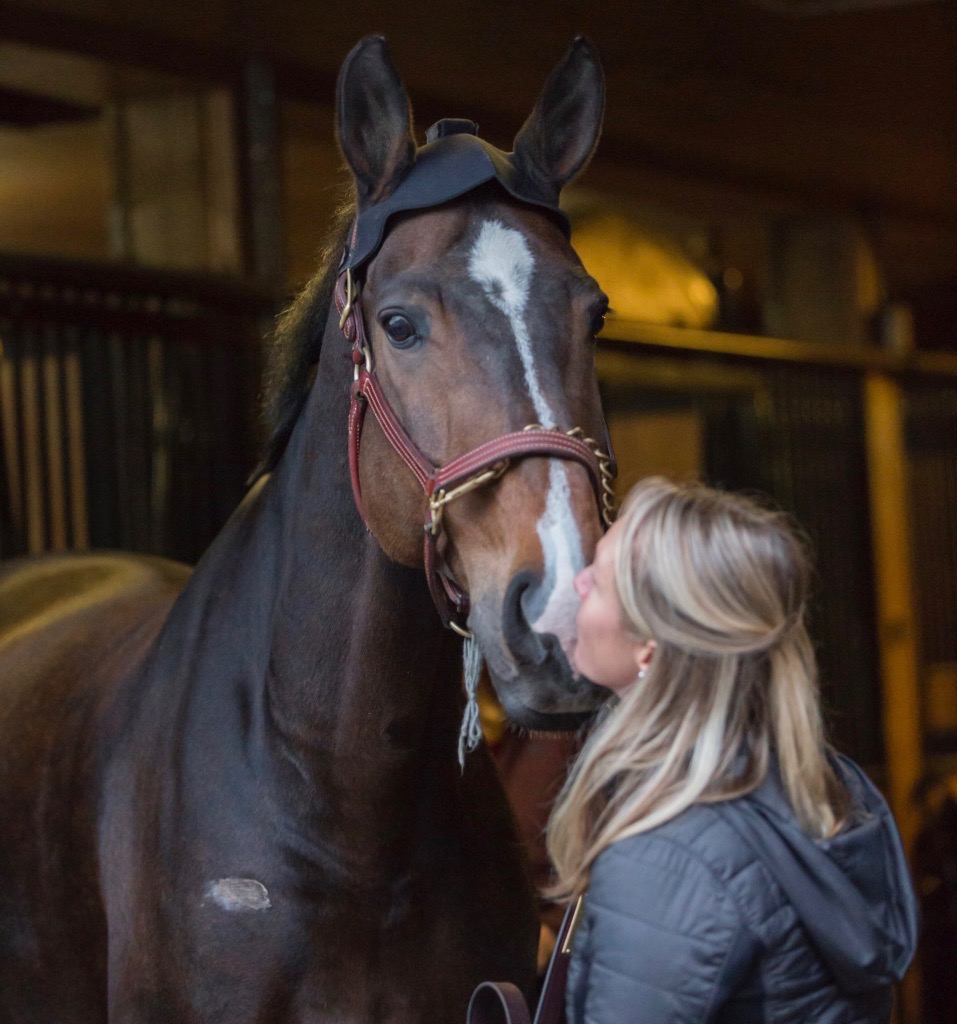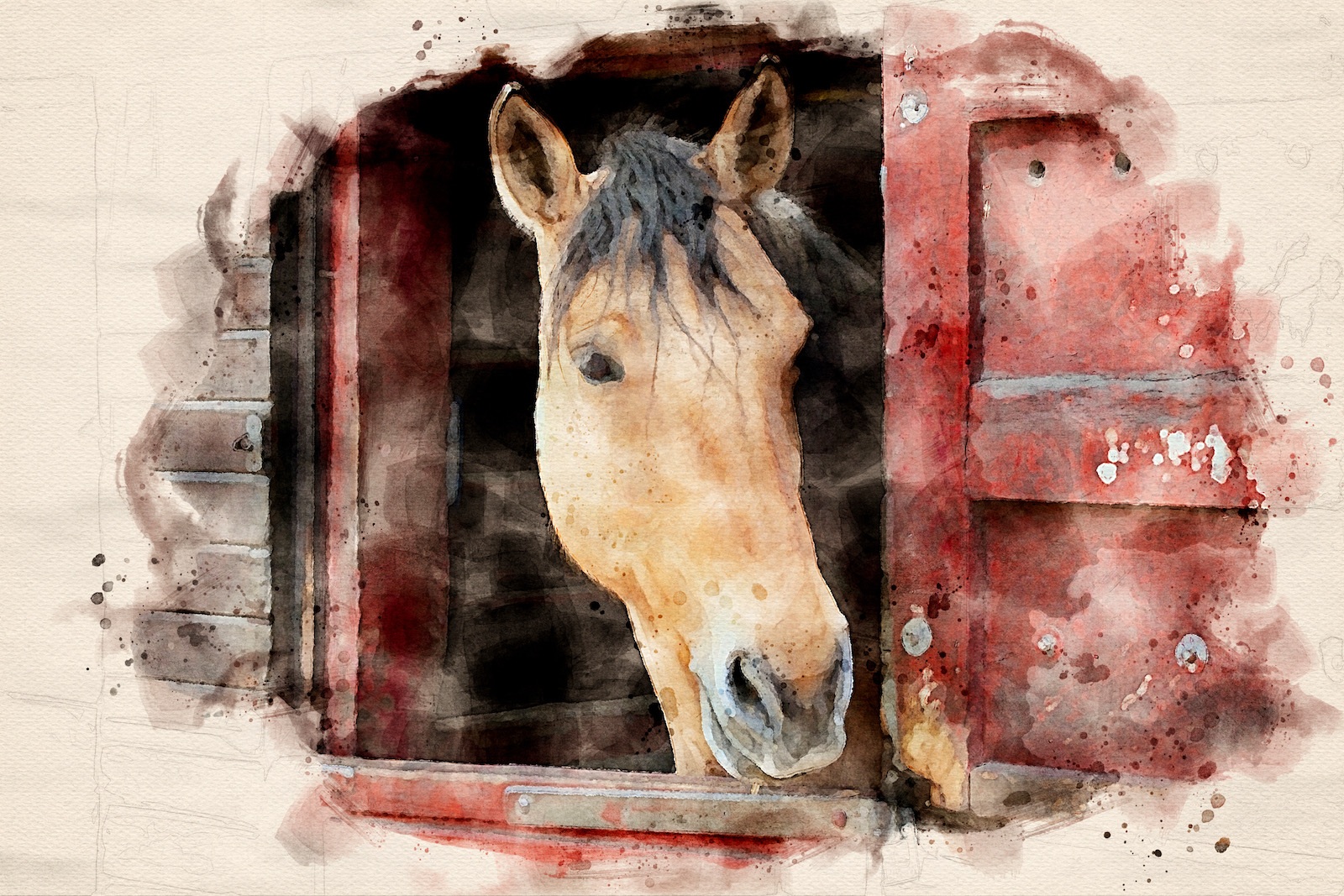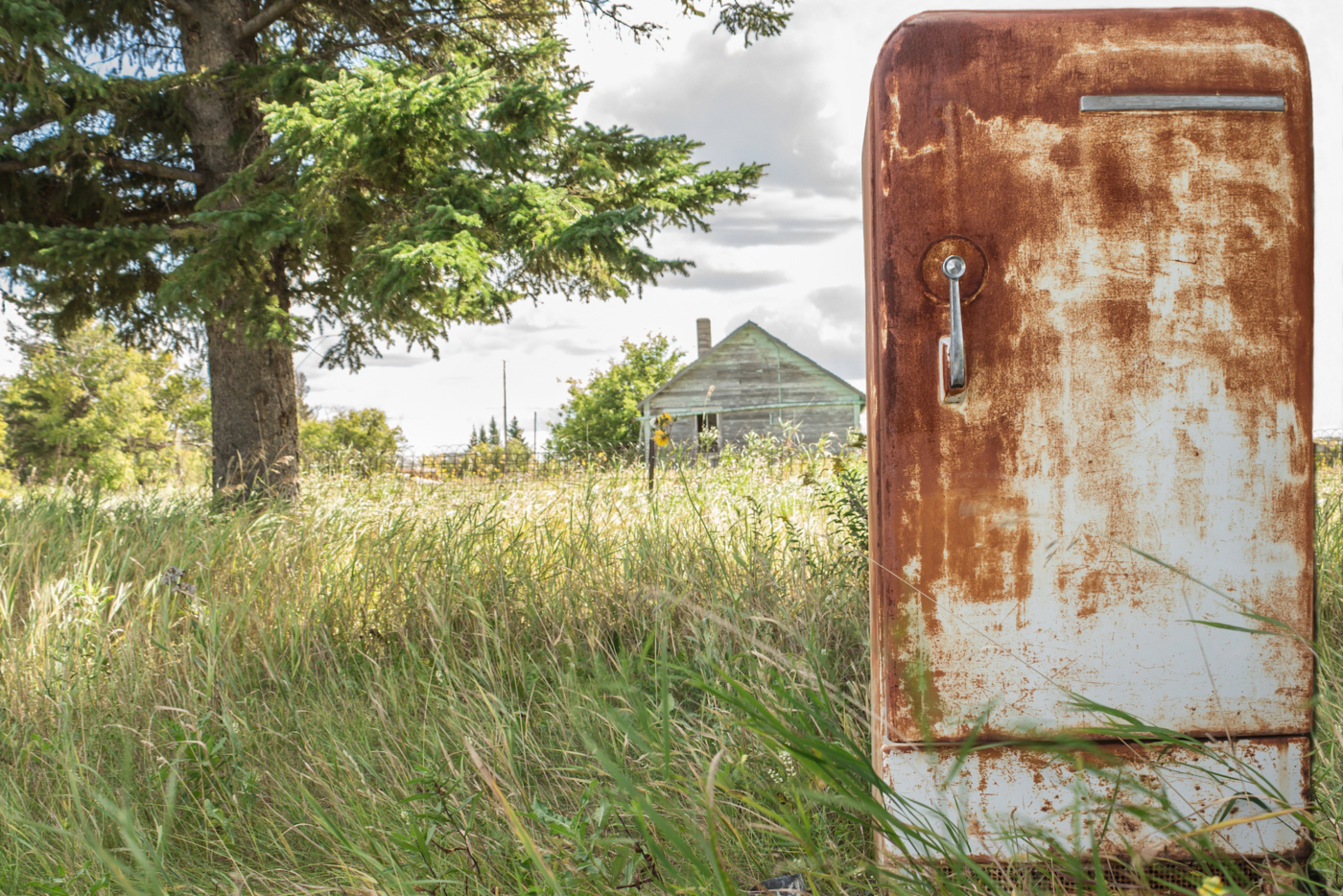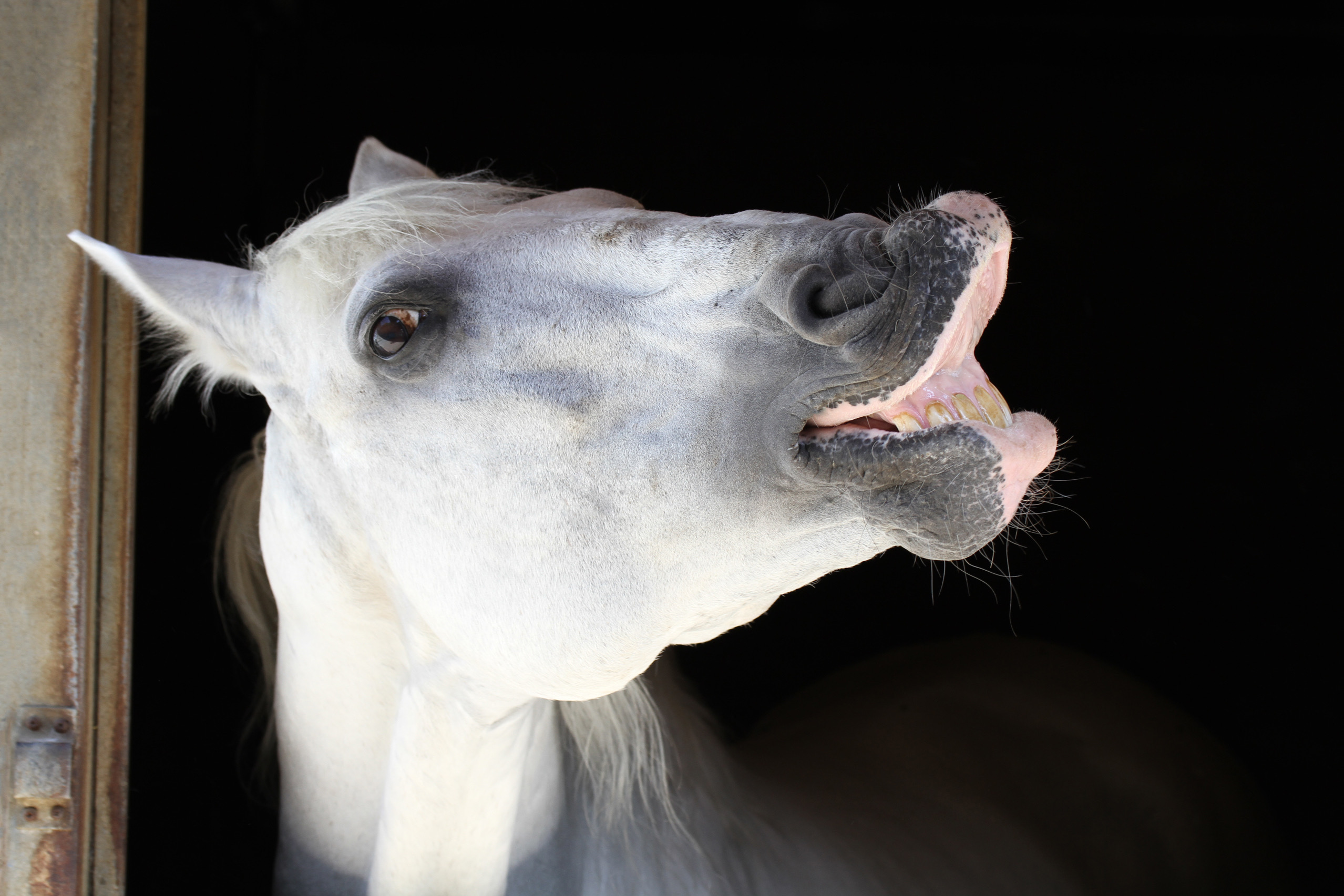Things that are impossible: traveling at the speed of light, sneezing with eyes open, and a dressage trainer and a showjumping trainer agreeing on how to train the same horse.
Or so we thought.
Last weekend, we attended a clinic focused on reducing stress and creating confidence in the horse. Sponsored by Hylofit, the demonstration was performed by Australian dressage trainer and TRT-method creator, Tristan Tucker, along with showjumping superstar Rodrigo Pessoa.
Armed with Hylofit’s state-of-the-art system for monitoring both rider and equine heart rates in real-time, Mr. Tucker coached Mr. Pessoa through a series of training techniques with some of his spookiest and most nervous jumpers. The audience observed as the anxious horses became visibly relaxed, and BPMs (beats per minute) dropped from overexcited levels (often well over 100) to resting levels (closer to 35) despite the introduction of loud noises, whirling plastic bags, and even (cue horror movie music) an umbrella! With heart rate data projected onto a large screen, the proof of the efficacy of Mr. Tucker’s TRT-method was there for everyone to see.
Perhaps as extraordinary as the rapid transformation of the horses was Mr. Pessoa’s willingness to adapt to the TRT-method. After a lifetime of success in the show ring (his achievements are too many to recount here, but let’s just say his trophy case is not lacking any gold), he remains humble and eager to enrich his horsemanship skills. To imply that we were impressed would be a flagrant understatement.
The worst part of the demonstration was that it appears to have been a singular event. Though both trainers are candid, funny, and bring unique suites of experience, they don’t seem to have any plans to take their two-man show on the road. With that in mind, we asked each of them a handful of questions with the hope that we could share a bit of last Saturday’s remarkable event with the OR family.

Tristan: The majority of our audience wasn’t able to attend the clinic, please provide a basic synopsis of the TRT-method for those who aren’t familiar.
“Our motto for the TRT-Method is to create a life for horses that is better than nature intended. The whole philosophy behind the TRT-method is to create for the horse a system that enables him to manage himself in a human environment, because horses are born only knowing how to survive in nature. They have a blueprint – a map – inside their heads that tells them what to do, and when to do it, and how to survive. Of course, that’s created for nature, so if they’re running on this blueprint within a human environment, everything in that environment is going to cause a reaction of flight, and everything in their life is going to be difficult. TRT provides a new map, new tools, and new information about how they can manage themselves in our environment.
The system focuses on how horses respond to four main things: movement, touch, sound and approach (either the approach of something when they’re still, or approaching an object that is still, which can also be scary). It’s really teaching them how they can be in control of themselves and the actions they take, and helping them know what to do when in the presence of something that moves, touches them, or makes a sound. It’s about a concept, rather than the specific “thing,” so the tools that we use are simply to be able to ask questions of the horse to enable him to learn what do in a certain situation. It’s not about getting used to the certain tool.”
Tristan: Who is the ideal TRT candidate?
“The basis of the TRT method is in teaching the horse how to manage himself, and helping him learn in what order he needs to move his body to provide himself stability, support and confidence. We do this from the very beginning. If a horse is old enough to stand he’s old enough to learn, so at two days old we can start, but a horse of any age can benefit from learning to manage himself properly in his environment.”
Rodrigo: You met Tristan Tucker only a few days before the clinic. Were you apprehensive about allowing a new acquaintance to work with your horses?
“Tristan came highly recommended through our good friend Eliane van Reesema, so I felt completely comfortable. He is also a very easy and open person.”
Tristan: During the Q&A portion of the clinic, your techniques were compared to those of some other trainers known for Natural Horsemanship? Are there any similarities or differences?
“To me, Natural Horsemanship is a marketing term nowadays more than anything. Good horsemanship is understanding yourself, having good control of your own body, and being able to project and draw energy to communicate with a horse. In that way, the TRT-method is related to a lot of other training techniques.
The tools used in the TRT-method are similar to those used in Natural Horsemanship. For instance, the rope halter; everyone seems to think that if you’ve got a rope halter you’re doing Natural Horsemanship. However, the rope halter is just a tool that is effective. It gives direct connection to where you want a horse to go, and because it’s very light it provides a perfect release which makes it very clear when a horse is doing the right thing.
The main differences between the TRT-method and other techniques are conceptual. The TRT-method is not about getting the horses to do a lot of things, or getting the horses to follow certain aids, but more about the horses learning to take full responsibility of themselves. They’re not getting good at being told what to do, but they’re getting good a knowing what to do.”

Rodrigo: What kind of transformation did you witness in your horses over the course of the week?
“Throughout the week the horses were doing very little cardio exercise, and yet they were never unruly. We saw an improvement every day, and the horses were seeming to truly understand what he wanted from them. It showed us how intelligent our group of horses is. The confidence of the horses really soared under his guidance, and they were able to manage themselves in stressful scenarios.”
Rodrigo: Describe the “aha-moment” when it became clear to you that the TRT-method was effective?
“I was incredibly impressed with the way Tristan was able to retrain the horses to the whip. The mounting block trick in which the horses approach the rider on the block is especially cool, and seeing them seek out things that would typically terrify them.”
Rodrigo: What was the most surprising aspect of your week with Tristan?
“How fast the horses take to the method, and how quickly we saw a change!”
Rodrigo: You mentioned to us your eagerness to improve your horsemanship skills however you can. Specifically, what will you take from your work with Tristan and add to your everyday horsemanship toolkit?
“Looking for answers in different places, and applying these particular methods as often as possible in our training.”
Tristan: You were born in England, grew up in Australia, and are currently based in the Netherlands. It seems as though it might be hard to keep up with you, but you do offer an online program. Can you tell us about that?
“Over the years, my business has changed and developed and morphed from various activities like giving a lot of lessons on a daily basis and breaking in 100 horses a year in the middle of nowhere by myself, to giving huge clinics and demonstrations in large venues to thousands of people throughout Europe. My journey is becoming more and more about sharing as much knowledge as I possibly can. The online course has enabled me to reach many people from countries all over the world. I think we’re at over four thousand full time members now from 59 different countries. That’s just not humanly possible standing in the arena teaching one-on-one, and the internet makes spreading and sharing limitless.
The online training is a very detailed step-by-step course that enables people to really have a starting point with any horse. We have live, interactive Q&A sessions for our members once a month where I sit at the computer for a few hours and people send in videos. It’s a bit like a webinar – people send in their work and I give tips on things that are good and things that could be improved. Some people are shy, so they tune in and want to stay in the background. Those people can make a connection to their horse by watching others, but it’s very much a community thing where everybody can contribute and get some real-life feedback.
The other big advantage we’ve found with the online training is that people have to take full responsibility. They sit and they watch and they take the information in, and then they go away and they practice, and then they come back and they can refer back and refresh their memory and go over the skills again.”
How has the Hylofit system affected your respective programs?
Rodrigo: “The Hylofit system has helped give us confirmation on suspicions that we have had in the past regarding stress, tension, physical weakness, etc. It has also given us tremendous insight into the horses’ anxiety associated with competition.”
Tristan: “For me, Hylofit has been a really amazing product in a lot of ways. It’s had the most impact in a lot of my large clinics. People can see the signs of a horse relaxing and changing his physiology, but Hylofit provides the actual proof in the form of a figure on a screen that gives a real indication of what’s happening inside of the horse. A lot of the time we can predict what’s happening on the inside: you see a horse licking his lips, his eye softens, his body posture lowers, and the tension lessens in his skin. Hylofit confirms to me that the horse’s body language is telling the truth.”
What is the mark you would ideally like to leave on the equestrian world?
Rodrigo: “I have always tried to push the development of the sport forward through various channels. I try to be open to improving, and am always looking forward while being respectful to the traditional past of our great sport.”
Tristan: “I’ve been asked this question a lot over the years, and of course the answer changes. For me it’s really about self-knowledge and self-improvement. I want people to feel that being in the moment with the horse is the most important thing. It’s not what happened yesterday or what might happen tomorrow. It’s really being in the moment with your horse, and the awareness that how much you understand about yourself is going to directly affect the relationship with the horse.
Also, I want people to understand that horses can actually have a better life with us than they ever would in nature, and that we can empower the horses to be as happy in their existence and their purpose and their job as we possibly can. I want my mark to be creating the mindset that we are responsible for that. The horses are bred and born into our human world and it’s our responsibility to teach the horses how to be able to get the best out of themselves.”


Photo Credit: Shelli Breidenbach
Special thanks to Rodrigo & Alexa Pessoa, Tristan Tucker, and the entire Hylofit team!
What is Hylofit?
The Hylofit system is the only equine wearable to offer in-ride feedback for horse and rider. Hylofit is designed to maximize communication between horse and rider, thus improving training results, and promoting the overall health and wellbeing of the horse. Its unique features include real-time feedback and post-ride insights for both athletes, as well as resting heart rate calculations, zone training, social sharing, video overlay, calendaring and more.
Sign up for our weekly newsletter to receive a 15% discount code exclusive to Outside Rein subscribers!
